Consider a cycle followed by an engine, (figure)
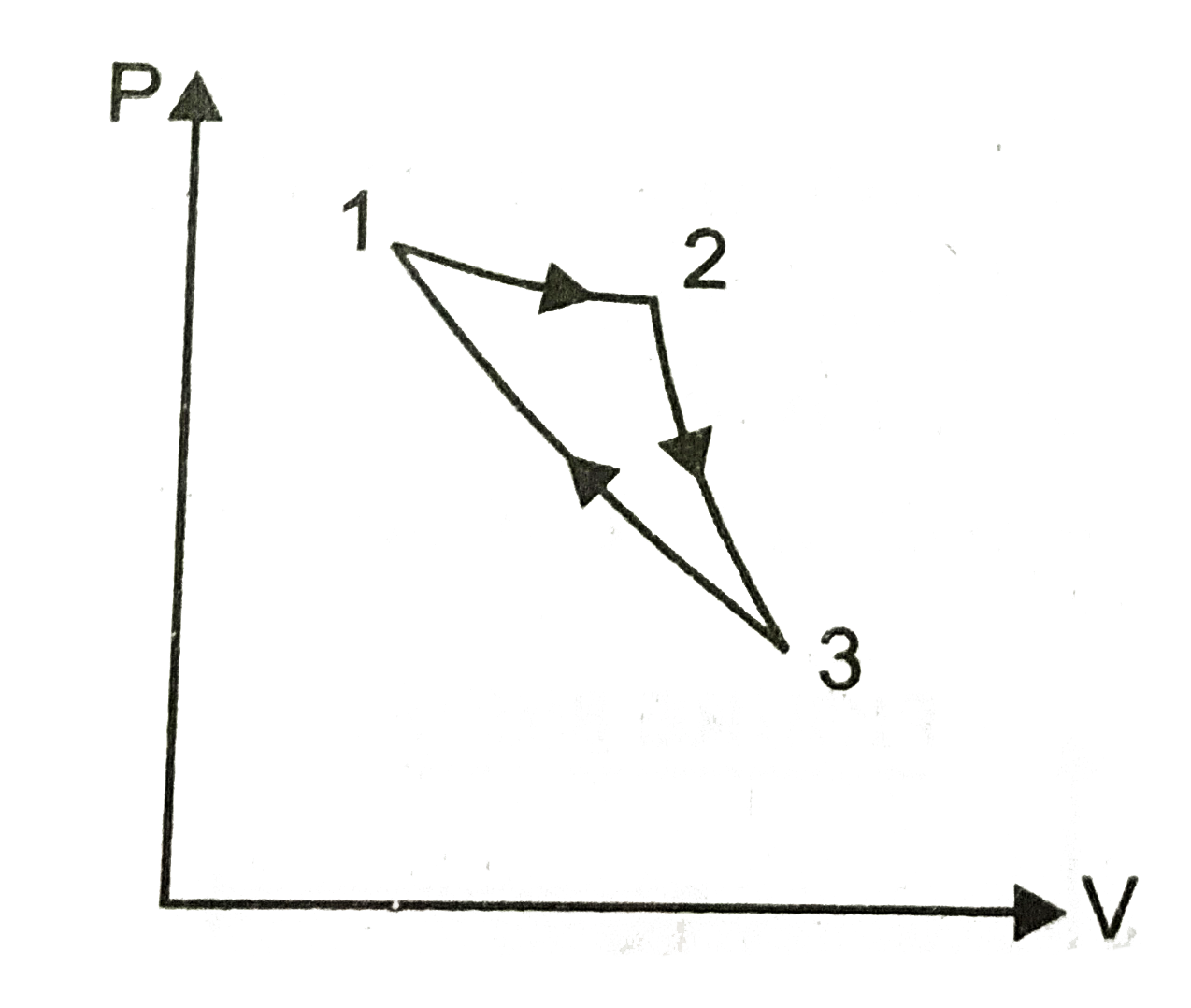
1 to 2 is isothermal 2 to 3 is adiabatic 3 to 1 is adiabatic
such a process does not exist because
heat is completely converted to mechanical energy is completely converted to heat in this process, which is not possible.
mechanical energy is completely converted to heat in this process, which is not possible.
curves representing two adiabatic processes don’t' intersted.
curves representing an adiabatic process and an isothermal process don't intersect.
The correct Answer is:A, C
(a) The given process is a cyclic process i.e., turns to the original state 1.
Hecne, change in internal energy dU=0
⇒dQ=dU+dW=0+dW=dW
Hence, total heat supplied is converted to work done by the gas (mechanical energy) which is an possible by second law of thermodynamics.
(c) When the gas expands adiabatically from 2 3. it is not possible to return to the same state with out being heat supplied, h ence the process 3 to 1 cannot be adiabatic
Topper's Solved these Questions
- KINETIC THEORY OF GASESBOOK - NARAYNACHAPTER - KINETIC THEORY OF GASESEXERCISE - LEVEL-V
10 Videos
- KINETIC THEORY OF GASESBOOK - NARAYNACHAPTER - KINETIC THEORY OF GASESEXERCISE - LEVEL-VI
10 Videos
- KINETIC THEORY OF GASESBOOK - NARAYNACHAPTER - KINETIC THEORY OF GASESEXERCISE - LEVEL-3(C.W)
13 Videos
- GRAVITATIONBOOK - NARAYNACHAPTER - GRAVITATIONEXERCISE - EXERCISE -IV
40 Videos
- LAW OF MOTIONBOOK - NARAYNACHAPTER - LAW OF MOTIONEXERCISE - EXERCISE - IV
35 Videos
Similar Questions
Find work in the given cycle, If AB is isothermal process and CA is adiabatic.

View SolutionOne mole of an ideal gas is carried through a thermodynamics cycle as shown in the figure. The cycle consists of an isochoric, an isothermal and an adiabatic process. Find the adiabatic exponent of the gas.
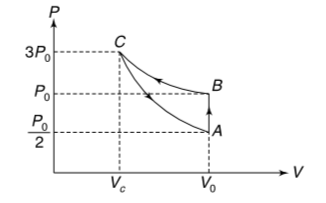
View Solution
Knowledge Check
Consider a cycle followed by an engine (figure.)

1 or 2 is isothermal
2 to 3 is adiabatic
3 to 1 is adiabatic
Such a process does not exist, becauseAheart is completely converted to mechanical energy in such a process, which is not possibleBmechanical energy is completely converted to heart in this process, which is not possibleCcurves representing two adiabatic processes don't intersectDcurves representing an adiabatic process and an isothermal process don't intersectThe three processes in a thermodynamic cycle shown in the figure are : Process 1 → 2 is isothermal, Process 2 → 3 is isochoric (volume remains constant), Process 3 → 1 is adiabatic. The total work done by the ideal gas in this cycle is 10 J. The internal energy decreases by 20 J in the isochoric process. The work done by the gas in the adiabatic process is -20 J. The heat added to the system in the isothermal process is
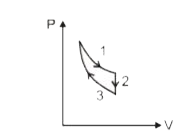 A0JB10JC20JD30J
A0JB10JC20JD30J
Identify isothermal and adiabatic process in the following diagram
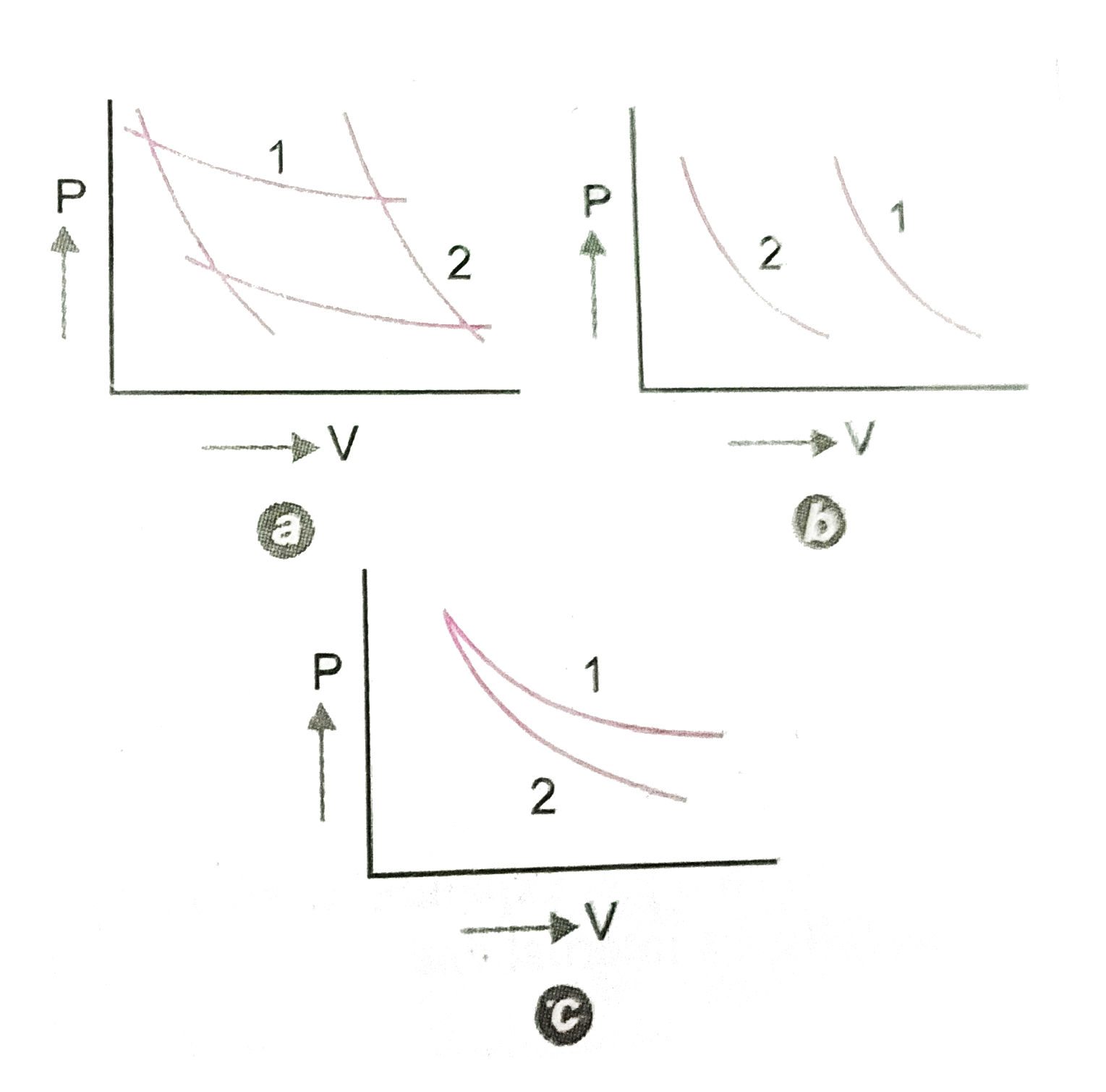
View SolutionThe curves A and B in the figure shown P-V graphs for an isothermal and an adiabatic process for an idea gas. The isothermal process is represented by the curve A.
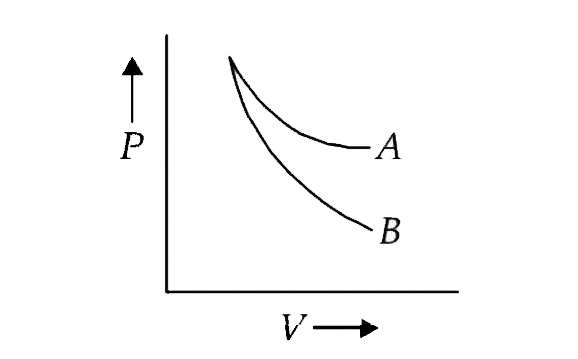
View SolutionDefine the following terms :
(i) System
(ii) Isothermal and adiabatic process
View Solution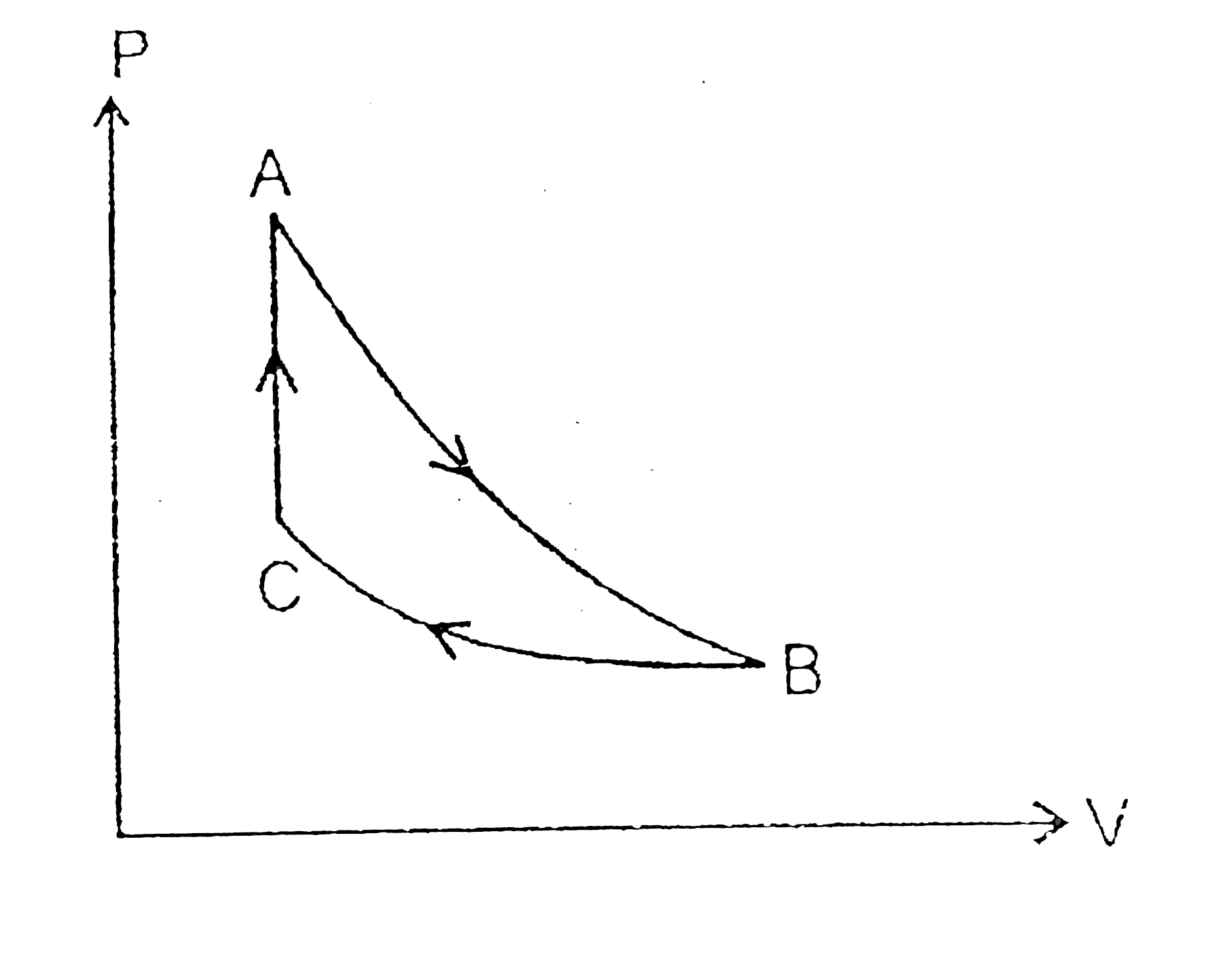
An ideal gas undergoes a cyclic process, in which one process is isochoric, one process is isothermal and one process is adiabatic. During the isothermal process, 40 J heat is released by the gas, and during the isochoric process, 80 J heat is absorbed by the gas. if work done by the gas during adiabatic process is W1 and during isothermal process is W2 then the magnitude of W1W2 will be equal to:
View SolutionAn ideal gas goes through a cycle consisting of isothermal, polytropic, and adiabatic lines, with the isothermal process proceeding at the maximum temperature of the whole cycle. Find the efficiency of such a cycle if the absolute temperature varies n−fold within the cycle.
View SolutionConsider the following cyclic process.

I. Isothermal , II. Adiabatic , (III) constant pressure process
Sum of the work and heat in the above is:
View Solution
